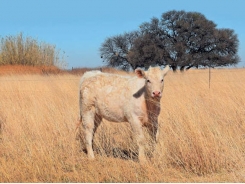Dietary canola meal may boost milk production when fed in early lactation

Canola meal may support increased milk production in dairy cows compared to soybean meal when included in an early lactation ration, says researcher.
A project evaluating the use of canola meal as a protein source compared to soybean meal in the diets of dairy cows starting lactation grew out of an ongoing interest in evaluating canola as a feed ingredient, said Kenneth Kalscheur, research animal scientist with the USDA-ARS US Dairy Forage Research Center.
“There’s been research looking at canola meal and other protein sources at mid-lactation and a meta-analysis [was conducted] to pull that all together,” he told FeedNavigator. “Almost all the studies have been cows at peak production, 45-60 days in milk, but no one had really evaluated canola meal in early lactation.”
The interest in evaluating canola use in early stages of lactation included looking at the levels of amino acids provided to cows using canola in place of soybean meal in the diets, he said.
“I was interested in seeing if there was a difference in early lactation when the need for amino acids is high,” he said.
At that stage, cows may use body stores to meet their needs, but too much weight loss can leave them at risk of disease, he added.
“We want to meet their needs in early lactation such that they’re optimizing their intake,” said Kalscheur. “If intake is good, then they produce more and are not in a negative energy balance for as long.”
The project found that cows getting the canola-based diets were able to produce more milk during the lactation period than those getting the soybean meal diets, he said. The research group presented on the project at the 2017 Dairy Nutrition Workshop at Pennsylvania State University, however, a paper on the project also is in progress.
The question examined in the research project was whether canola meal might have a better amino acid profile to meet cows’ needs during the early lactation period, he said.
Early lactation feeding trial
During the feeding trial, 79 cows were given one of four diets for the first 16 weeks of lactation, said Kalscheur.
The diets included a ration made with canola meal at two levels – 15.4% and 17.6% crude protein of dry matter – and the same diets using soybean as the protein source, he said. “We measured dry matter intake, milk production, milk components and amino acid profile,” he added.
“What was surprising was the cows on canola did well,” he said. “On that particular study, the cows on canola [produced] 4.5kg more per cow per day.”
There was no effect found from the high- or low-inclusion rate of the canola in the diet, he said.
Dry matter intake varied only slightly between the two types of diets, with cows getting the canola meal diets tending to have intake increased by 0.8 kg/d, the researchers said in their presentation on the project.
“The 4.5kg difference is over the four-month period and that is statistically different,” said Kalscheur. “It did stay different – the canola meal cows were producing more throughout.”
“They started the same and then we started to see a difference,” he said. “The cows on lower protein performed well, but cows on higher protein did sustain production – cows were peaking at 10-12 weeks, not 6-8 weeks.”
The milk composition tended to have slightly higher milk fat when cows were on the lower-protein diet, he said.
Milk urea nitrogen also tended to be lower for cows on the canola meal diets, the researchers said. Energy-corrected milk was greater for cows getting the canola diets rather than the soybean ones.
“The hypothesis is the amino acids provide by canola meal are more optimal for meeting the requirements of dairy cows, especially in early lactation when intake is more limiting,” said Kalscheur. “The amino acid profile becomes more important because amino acids are the building blocks.”
“However, that might not be the only part of the story,” he added. “At this stage, we’re still evaluating the results of the study.”
Dairy producers and nutritionists also still need to price their feed ingredients when considering the use of canola meal in a diet, he said.
“Like every feed ingredient that you purchase, you have to evaluate how it prices into your ration,” he added.
Related news
Tools

Phối trộn thức ăn chăn nuôi

Pha dung dịch thủy canh

Định mức cho tôm ăn

Phối trộn phân bón NPK

Xác định tỷ lệ tôm sống

Chuyển đổi đơn vị phân bón

Xác định công suất sục khí

Chuyển đổi đơn vị tôm

Tính diện tích nhà kính

Tính thể tích ao




 Calves need more motherly care
Calves need more motherly care  A better Charolais herd with in vitro fertilisation
A better Charolais herd with in vitro fertilisation